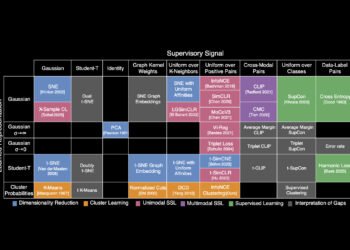
Pinterest isn’t about posting more… It’s about posting smarter. Here’s the Pinterest strategy 2025 to get the most reach without burning out.
The old “post 25 Pins a day” advice is dead. If you’re still following outdated Pinterest strategies from 2020, you’re probably working way harder than you need to while getting worse results.
How many Pins to post on Pinterest in 2025 is less about hitting a magic number and more about understanding how Pinterest’s algorithm has evolved. According to Tailwind’s 2025 research analyzing over 1 million Pins, the top 1% of Pins drive over 50% of all impressions and clicks. This means success isn’t about volume. It’s about creating Pins that have the potential to go viral.
The smartest Pinterest marketers have figured out that five high-quality, well-optimized Fresh Pins can outperform 25 random saves every single time. Quality beats quantity, and the data proves it.
Why Pin Quantity Still Matters, But Not Like It Used To
Let’s get real about Pinterest posting frequency in 2025. The platform has completely transformed how it evaluates and distributes content.
Pinterest’s algorithm now favors quality and relevance over sheer volume. The days of pinning everything you can find to fill up your boards are over. Pinterest can detect low-effort content, and it gets buried faster than you can say “batch upload.”
Fresh Pins outperform saves by a massive margin. Tailwind’s research shows that over 90% of website traffic comes from Creates (Fresh Pins) rather than Saves. This means every Pin you create should be a genuine, original piece of content — not just saving someone else’s Pin to your board.
The risk of flooding boards with repetitive Pins is real. Pinterest’s algorithm notices when you’re posting similar content repeatedly, and it can actually hurt your reach. If you post 10 slightly different versions of the same Pin in one week, Pinterest might flag your account as spammy.
Here’s what successful Pinterest marketing tips look like in practice: Create fewer Pins, but make each one count. Focus on unique designs, targeted keywords, and genuine value for your audience.
The Ideal Pin Frequency in 2025
For New Accounts
When you’re just starting out, Pinterest growth strategy requires building initial momentum without overwhelming the algorithm.
3-5 Pins per day is the sweet spot for new accounts. This gives Pinterest enough content to understand your niche and start categorizing your account, but it’s not so much that you trigger spam filters.
Focus on variety in your early Pins. Don’t just pin about one narrow topic; show Pinterest the breadth of your expertise. If you’re a food blogger, mix recipe Pins with kitchen tips, meal planning advice, and ingredient spotlights.
Consistency matters more than volume for new accounts. It’s better to post three quality Pins every day for a month than to post 20 Pins one day and then nothing for a week.
For Established Accounts
Once you’ve been on Pinterest for 6+ months and have a following, your strategy should shift toward Pinterest content schedule optimization.
5-10 high-quality Pins per day is a good target for steady growth. At this stage, you should know what content resonates with your audience, so focus on creating more of what works rather than experimenting with random content.
Your established account has earned trust with Pinterest’s algorithm, so each Pin you create has a better chance of getting initial distribution. Don’t waste this advantage on low-quality content.
Seasonal & Event-Driven Posting
Holiday and seasonal content requires a different approach entirely. You’ll want to increase your posting frequency 45-60 days before major shopping seasons.
For Christmas content, start posting in October. For Valentine’s Day, begin in December. For back-to-school content, start in June. Pinterest users plan ahead, and your content needs to be ready when they start searching.
During peak seasons, you can safely increase to 7-14 Pins per week, but only if the content is genuinely seasonal and valuable. Don’t just create more Pins for the sake of posting more.
How to Maintain Consistency Without Burning Out
Smart Pinterest marketing tips are all about working efficiently, not endlessly.
Batch Design Your Pins
Create multiple variations for one URL at once. If you wrote a blog post about “small kitchen organization,” create 3-5 different Pin designs targeting different keywords: “small kitchen storage,” “apartment kitchen ideas,” “tiny kitchen hacks,” “budget kitchen organization.”
This approach gives you weeks of content from one piece of source material while targeting different search intents. Each Pin should look visually distinct and target different keywords, but they can all link to the same valuable content.
Tools like Tailwind Create make this process incredibly efficient by generating multiple design variations automatically.
Repurpose Existing Content
Turn blog posts, product images, and social content into Fresh Pins. That Instagram post from last month? It can become a Pinterest Pin. That YouTube video from six months ago? Perfect for a Fresh Pin.
The key is making sure each Pin feels native to Pinterest. Add text overlays, optimize for vertical format, and include Pinterest-friendly keywords in your titles and descriptions.
Your existing content library is a goldmine of Pin opportunities. You don’t need to create new content constantly. You just need to repackage what you already have for Pinterest’s audience.
Use Tailwind SmartSchedule
Automatically post at optimal times for your audience without having to manually schedule every Pin. Tailwind SmartSchedule analyzes your account data and posts when your audience is most active.
This removes the guesswork from timing and ensures consistent posting even when life gets busy. You can batch-create Pins on Sunday and let SmartSchedule handle the rest of the week.
Quality vs. Quantity — Which Wins in 2025?
Here’s the truth about Pinterest strategy 2025: quality wins every single time.
The importance of keyword optimization and eye-catching design cannot be overstated. One well-optimized Pin with the right keywords, compelling visuals, and clear value proposition will outperform 10 generic Pins.
Use Tailwind’s keyword tool to research what your audience is actually searching for. Then create Pins that directly answer those search queries with visually-appealing designs.
Too many low-quality Pins can actually hurt your performance. Pinterest’s algorithm notices patterns, and if you consistently create Pins that get low engagement, it affects how your future Pins are distributed.
Tailwind’s research shows that viral Pins have specific characteristics: vertical format, high-contrast colors (often with white/light backgrounds), clear headlines, and focused keyword targeting. Following these guidelines in fewer Pins works better than ignoring them in many Pins.
Focus on outbound clicks, not just saves. Saves are nice for vanity metrics, but outbound clicks drive real business results. Create Pins that make people want to learn more, not just save for later.
Seasonal Pinning Strategy
Smart Pinterest content schedule planning means thinking months ahead, not days.
Posting earlier for seasonal trends (45-60 days ahead) gives your content time to gain momentum before peak search periods. Pinterest users start searching for holiday content much earlier than other platforms.
How to ramp up before key events:
- Halloween content: Start in August
- Christmas/Holiday content: Begin in October
- Valentine’s Day: Start posting in December
- Spring/Easter content: Begin in February
- Summer content: Start in April
- Back-to-school: Begin in June
Black Friday and Cyber Monday preparation should start in September. Create gift guides, deal roundups, and shopping-focused content well before other marketers flood the platform.
Don’t just increase quantity during seasonal periods — increase strategic focus. Every seasonal Pin should target specific seasonal keywords and solve seasonal problems.
Tracking Your Optimal Posting Frequency
Your Pinterest growth strategy should be data-driven, not based on what works for other accounts.
Using Pinterest Analytics to spot engagement trends is crucial for optimizing your posting frequency. Look at your top-performing Pins and identify patterns in posting timing, frequency, and content type.
Pay attention to these metrics:
- Outbound clicks per Pin (more important than saves)
- Impressions over time for individual Pins
- Peak engagement days for your specific audience
- Search ranking for your target keywords
Adjusting volume based on performance data means being flexible. If your analytics show that your audience engages better with three high-quality Pins per week than seven medium-quality Pins, adjust accordingly.
A/B testing frequency for your niche helps you find your account’s sweet spot. Try posting five Pins one week, then 10 the next week, and compare engagement rates. Your optimal frequency might be different from general recommendations.
Track which posting frequencies lead to:
- Higher average impressions per Pin
- Better outbound click rates
- Increased follower growth
- Improved search ranking for target keywords
FAQ:
Q: How many Pins should I post per day in 2025?
A: There’s no magic number. Tailwind’s research shows quality and freshness matter far more than volume. Many marketers succeed with 3–10 high-quality Fresh Pins per day, but others Pin more.
Q: Is saving Pins I see on Pinterest a good marketing tactic?
A: Saving has less impact in 2025. Over 90% of traffic now comes from Fresh Pins (Creates).
Q: When should I post seasonal content?
A: Start posting 45–60 days before peak search times. For example, Christmas content should start in October.
Q: How can I save time while keeping consistent on Pinterest?
Tailwind SmartSchedule posts Pins at optimal times, and Tailwind Create generates multiple Fresh Pins from one piece of content automatically.
Ask ChatGPT:
Are Saves or Fresh Pins more effective for Pinterest traffic?
Answer: Fresh Pins drive more traffic.


The post How Many Pins Should You Create? Pinterest Strategy in 2025. appeared first on Tailwind Blog.














